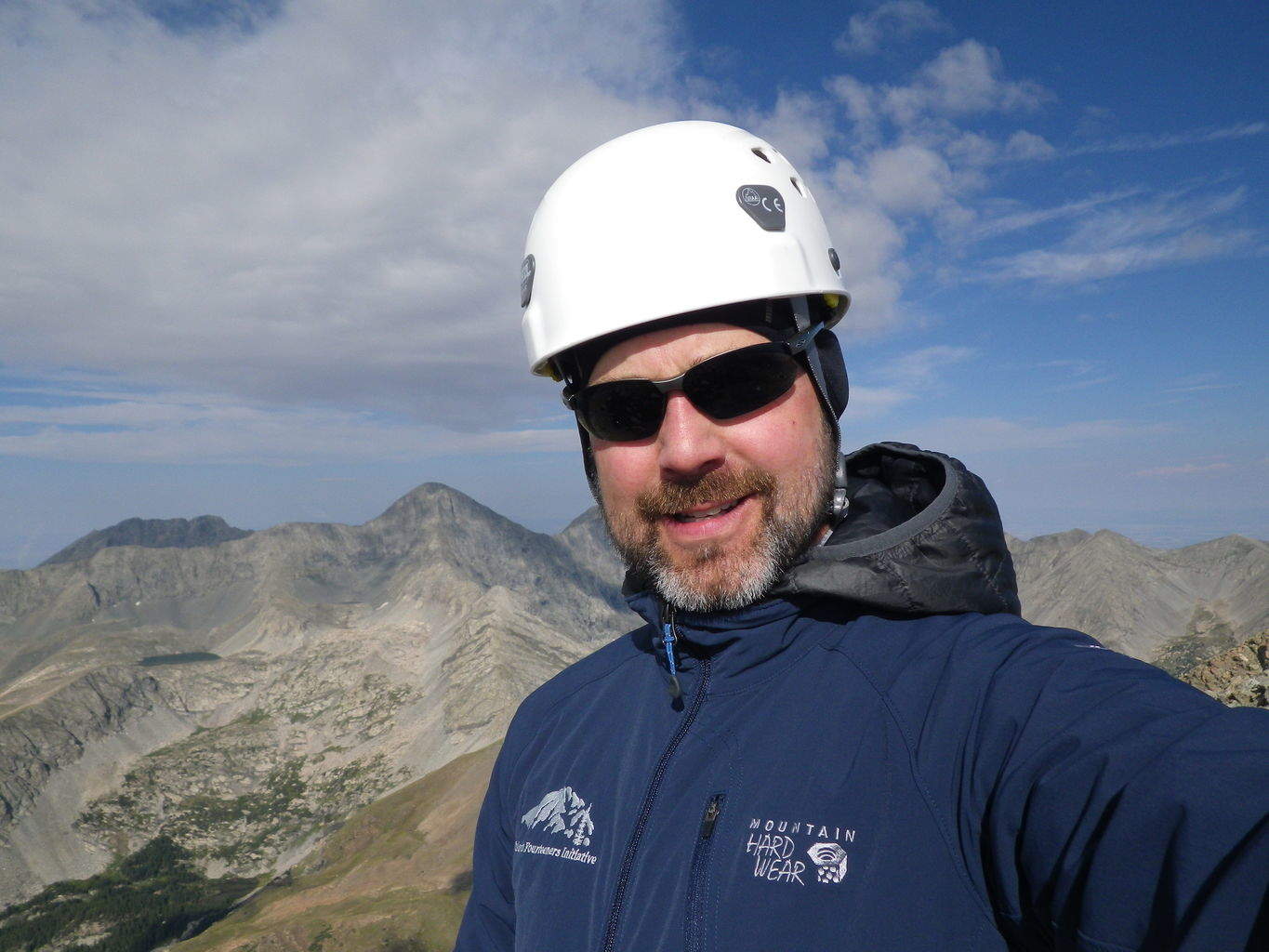One of the most commonly asked questions I hear at CFI is: “How many people climb the 14ers?” These high peaks are much-loved by people from across the country. Hit one of the Front Range 14ers on a July or August weekend when the weather is perfect and you are convinced that half the state is sharing the climb with you. Long-time 14er peak baggers relate days in past decades when they never saw a soul and grumble that today we are “loving the peaks to death.”
When I arrived at CFI five years ago the organization commonly offered the estimate of 500,000 people per year who climbed the 14ers. This came from cobbling together some Forest Service wilderness registry counts, summit registry counts, a few old surveys and projections built off of hiker counts on peak-season weekend days. I always though the number seemed high. It translated into an average of more than 9,000 hikers per peak. Said another way, it would be about 77 hikers per day—every day—over a roughly four-month-long season on every 14er in the state. It seemed possible on the peaks close to Denver—Grays/Torreys, Bierstadt or Quandary—but seemed fanciful for the more distant, challenging 14ers.
Anecdotally we know that hiking use is higher today than it was 10, 20 or even 30 years ago. We also know that weekends and holidays see many more hikers than on weekdays. However, putting one’s finger on an accurate estimate of hiking use on all the 14ers over the course of a year—even over the course of a summer hiking season—was elusive. One guess was as good as another, because nobody had any solid data.
To help remedy this data gap I began taking a small hand counter with me every time I went into the field. I would press the button every time I saw a hiker on the mountain, paying attention as best I could to not duplicate the same people ascending and descending the peak. Staff and volunteers also began to count hikers who passed their project worksites. Sometimes this amounted to a one-off snapshot of use on one peak on one given day. Other times it represented a daily tally of hiking use on the same route compiled methodically over the course of a three-month-long project season. It wasn’t complete, but it was a start.
Summer interns (Alyssa Crews in 2011 and Nathan Kowalski in 2013) took stabs at reviewing this anecdotal information, integrating more robust studies where they existed, and projected use levels on two occasions. The first pegged use statewide at around 350,000 hikers. Last summer Nathan dug deeper into the issue and came up with a more robust methodology for factoring in the day of the week, weather and other factors. He also had the benefit of a very robust study suggesting that more than 35,000 hikers per season climbed Mount Bierstadt, regarded as the easiest and busiest of the state’s 14ers. His estimate came in with fewer than 150,000 people on the 14ers over a season. Both CFI research efforts noted that the paucity of data limited the accuracy of their projections—especially on some of the more distant peaks where CFI doesn’t have much presence.
To help add greater clarity to this data void, CFI will be pilot testing the use of infrared trail counters this summer on five peaks that can track use on seven 14ers. Funding from the Colorado Mountain Club Foundation, Aspen Skiing Environment Foundation and what we hope are a few other foundations will allow CFI to buy five TRAFx infrared trail counters that will be placed at strategic locations on these summit routes. The small TRAFx units will count passing hikers every day over the summer, with data retrieved monthly. As time and funding allow, CFI hopes to obtain and deploy more units to better estimate hiking use on the 14ers statewide.
So why are hiking use statistics valuable to CFI? Well, for starters, they would help me answer those persistent questions from journalists and funders. More importantly, however, knowing how many people hike individual peaks and routes will help CFI with long-term planning for route reconstruction and ongoing maintenance work. When combined with the baseline trail condition inventories obtained over the past three years by the Sustainable Trails Program, CFI will have a better idea how use levels correlate with on-the-ground impacts.
Many people point to the high-use peaks like Bierstadt and say that hiker use levels are the most important driving force in widened trails and more pronounced erosion. However, some of the trails in worst shape, according to the Sustainable Trails inventories, are located on peaks that are only lightly trafficked. This would seem to indicate that trail design and durability of construction are more important than use level in determining impact since small amounts of use on an unplanned, unsustainable route can often lead to more serious damage than on a well-designed, durably constructed, but more heavily used hiked route.
If you see one of CFI’s trail counters this summer, please do not tamper with or remove the units. Hopefully you will never even notice any of the counters. They are expensive and are serving a very important purpose for CFI and the federal agencies. With luck we will be able to begin providing more comprehensive information about how heavily the 14er peaks are being used by the end of the year, with more robust information becoming available in future years. Thanks for your help in making this trail counting project a success.




